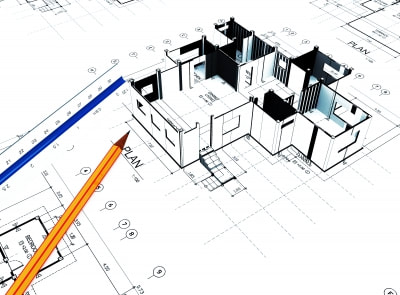Renovating homes containing hazardous materials could be deadly Image courtesy of Michelle Meiklejohn at FreeDigitalPhotos.net Image courtesy of Michelle Meiklejohn at FreeDigitalPhotos.net There’re a number of hazardous materials that can be encountered when renovating an old house. The most common of these is asbestos. Asbestos material should be handled and disposed of by a specialist. Not only can it be hazardous to people in the area, but most countries have strict legislation governing the handling and disposal of asbestos. Failure to adhere to the rules could result in fines, as well as the costs of remedial work to correctly dispose of contaminated materials. Read More Asbestos could be encountered in roofs, ceilings, walls, insulation, electrical equipment, water pipes and floor covering materials. If there’s any concerns about asbestos it’s recommended that experts are called in to test suspect materials. An expert from your area will be familiar with the type of materials used in buildings of the same age and can usually quickly test suspect materials and prepare a report. Additional hazards to consider when doing renovation work include:
It's important if you're doing home renovations that you don't harm your health or your family's health. Ask for expert opinion if you're unsure what materials you're dealing with and if they contain lead or asbestos. Ensure you don't incorporate materials into your new home which could be harmful to your family. Do you want to learn more about renovating and building houses? I've written 2 easy to read books 'An Introduction to Building and Renovating Houses - Volumes 1 and 2'. Volume 1 deals with Hiring Contractors, Managing Construction and Finishing Your Home. and Volume 2 deals with Finding Your Ideal Property and Designing Your Dream Home.
("Great for those that DIY. Very helpful in home renovations!" said a Reader on Amazon.com 5*****) These books are available from Amazon and other online bookstores in paper and ebook. The tips and advice in these books will save you money, they will minimise issues building your new home, and they will help you design and build your dream home. For as little as $20 you could save yourself thousands of dollars. © 2019 This article is not to be reproduced for commercial purposes without written permission from the author.
0 Comments
Building rubble - a perennial problemNever underestimate the amount of rubbish generated on a building construction project. This could be:
Getting rid of building rubbish is expensive, so many contractors will try:
Reducing building rubbishConstruction waste can be reduced by:
Conclusion - minimising waste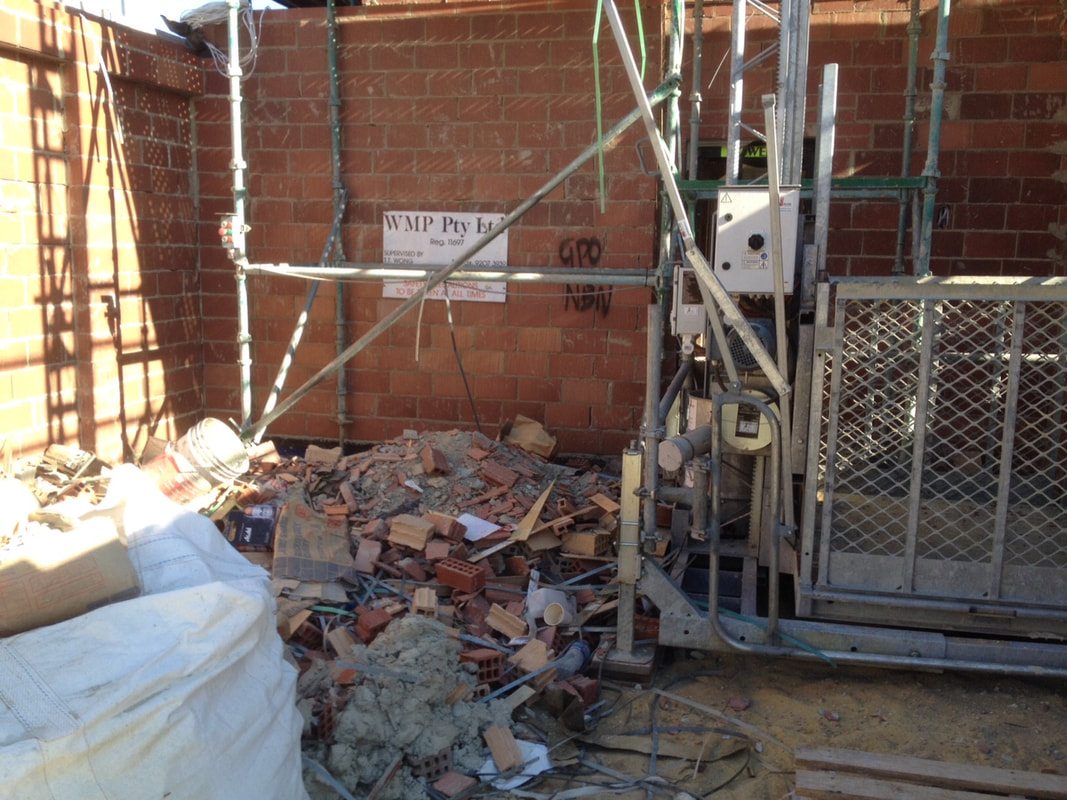 Construction waste if it isn't regularly cleared makes the project site look untidy and it can be a trip hazard causing injury. Uncontrolled dumping of waste on the site could lead to contamination of other materials, including the ground, resulting in a bigger problem to clean up. Stored waste, particularly foodstuffs, attract rodents. Neighbours will object when waste papers blow around the neighbourhood, unpleasant odours emanate from piles of rubbish, or when building rubble blocks sidewalks and roads. Rubble entering storm-water drains will cause blockages which could create localised flooding of the site, neighbours and the street. Ensure your building contractors keep your project site clean. Limit waste, breakages and rework and recycle wherever possible. You will have happier neighbours, a safer project site, and inevitably lower costs.  ("Great for those that DIY. Very helpful in home renovations!" said a Reader on Amazon.com 5*****) ("Great for those that DIY. Very helpful in home renovations!" said a Reader on Amazon.com 5*****) This is an extract from my new book 'An Introduction to Building and Renovating Houses: Volume 1 Hiring Contractors, Managing Construction and Finishing Your Home' ("Great for those that DIY. Very helpful in home renovations!" said a Reader on Amazon.com 5*****) which also contains lots more valuable information to save you money and ensure that your home build or renovation project is a success. Click on the image to read a preview on Amazon. The book is available in paper or ebook form from Amazon and other online stores, or ask your local bookstore to order a copy for you. For tips on designing your new house as well as renovation ideas read Volume 2 - Finding Your Ideal Property and Designing Your Dream Home © 2019 This article is not to be reproduced for commercial purposes without written permission from the author. Does your new home have numerous problems and defects? Image courtesy of Stuart Miles at FreeDigitalPhotos.net Image courtesy of Stuart Miles at FreeDigitalPhotos.net We all hate it when we buy an item of clothing and get home all excited only to find that the item has a defect. Sometimes we might wear a new pair of shoes once or twice before they fall apart. I'm sure we've all purchased food items from the supermarket only to find when we want to eat the item it's not fit for consumption. It's really annoying. Now imagine paying a builder to renovate an existing home or build a new home, then after paying them tens of thousands, even hundreds of thousands, of dollars for your brand new home you find it's riddled with defects! Yet this poor standard is almost the norm in some jurisdictions. Near us is an apartment building which was completed 8 months ago and the apartment owners have moved in. Yet, for the last 8 months the builder has been continuously on site repairing defects. Some apartments have had severe leaks which have required carpets to be ripped up and replaced, walls to be painted and cupboards redone. In this article read how a mother of 2 paid 350,000 pounds for a brand new home which has 245 faults Don't let poor quality building work spoil your dream home Now of course it doesn't have to be like this. In my new book 'An Introduction to Building and Renovating Houses: Vol 1 Hiring Contractors, Managing Construction and Finishing Your Home' I describe the steps you should take to ensure you have the desired quality in your new home. The book includes a detailed list of what to look for when it comes to defects. A house that can easily be altered to suit changing needsYour circumstances change with time. Families grow as you have children, then, they shrink as children leave to lead their own lives. But, even as your children grow-up they have different needs and interests. They’re not going to be that baby in the cot which is close at hand for long, they’ll eventually become teenagers who want their own space to enjoy with friends. As you age you have different needs, maybe now you leave home every day for an office, but at some stage you’ll retire and spend more time with your hobbies, or even work from home. You’ll eventually become infirm and steps might no longer be easy for you. Older parents could depend on you more (especially if something happens to one parent) and they might want (or have to) move in with you. When the time comes for these changes you may need to move to another house, or renovate your existing home to adapt it to these changes. But you can, with a little forethought and planning, ensure that your house is easily adaptable for many of these changes. If you’re becoming advanced in age you should design your house with this in mind. You don’t have to include all the features now that a mobility impaired person needs, but getting the basic layout right now so that it’s easily adaptable later will save future expense and work. Designing the house so that children can have their own space, even separate entrances, could mean that once they’ve left you can convert that space to rent out. Being able to shut this area off from the rest of the house may be beneficial. Consider how you could re-purpose bedrooms later when the children have left to become hobby rooms, home offices or work rooms when you retire. With a multi-storey house it’s often useful to have at least one bedroom downstairs. If someone in the family has an injured leg they probably can’t easily climb steps. But, when you’re older you may find it easier to live on the ground floor. We’ve always found a spare bedroom with a bathroom on the ground floor useful for elderly visitors and relatives. Children probably want a swimming pool and a garden to play in when they’re young, but you’ll find that they quickly grow up and you’re left maintaining the swimming pool and garden that they seldom use. Positioning your home in the right place on your property may allow you to divide the land and sell a portion of garden, or even build a flatlet or a new home for you. But, it’s not just you and your family that’ll change. With time, the cost of utilities increase, there’ll be new technology and new appliances. The cost of labour will increase so it’ll be more expensive to hire cleaners and gardeners. Fashions change and furniture, fittings and colours which were once modern aren’t suitable anymore. Houses with a neutral decor can often be easily adapted to suit changes in fashion, tastes and furniture. It’s also about the home being adaptable for future buyers. For instance, you might desire a home theatre room, but a future buyer might not. If you’ve designed the room with no windows it’s going to be difficult for the next person to use the room for something else. The same goes for converting studies to another bedroom, or vice versa, unless they’ve been planned to be easily adaptable. It's important to consider the layout of the interior of the house, the location and sizes of windows, the position of cupboards (or future position), the location of electrical sockets, cable outlets, colours of tiles and bathrooms, and more. How easily can rooms be transformed to another use or to a different style? Can you see yourself being able to live in your home when you're older? Don't only design a home that's right for now - design it for the future as well. For more valuable tips and advice read: 'An Introduction to Building and Renovating Houses - Volume 1 Hiring Contractors, Managing Construction and Finishing Your Home' and 'Volume 2 Finding Your Ideal Property and Designing Your Dream Home'
This is an extract from: 'An Introduction to Building and Renovating Houses Volume 2' by Paul Netscher. Available in paper or eBook from Amazon.com, Amazon UK, Amazon CA, Amazon AU and all online bookstores. To read more © 2019 This article is not to be reproduced for commercial purposes without written permission from the author. Don't be faced with unexpected additional home building project costs Image courtesy of TAW4 at FreeDigitalPhotos.net Image courtesy of TAW4 at FreeDigitalPhotos.net When you receive prices from your contractors it's important to check their prices. A couple of weeks ago we discussed important considerations when checking your contractor's price. It’s important to check what each contractor has included or excluded in their price. A contractor may be cheaper than another’s price because they haven’t priced all items included in the other price. Check whether these items are included:
Some contractors can include unreasonable provisional sums and prime cost items (which I'll discuss in future articles) which are far too low, meaning that their price will inevitably increase before your home is complete. Of course, some contractors may have included for items which you don't want, or perhaps you intend to do the work your self, or employ another contractor to do the work. Don't pay for items that you don't want or need. Ask the contractor to exclude the items you don't want and adjust their price down accordingly. Remember your builder's price might not be the bargain you think it is. Don't be caught by surprise when you receive bills for items that you thought were included in the contractor's price - items which may have been included in other contractors' prices.  This is an extract from my new book 'An Introduction to Building and Renovating Houses: Volume 1 Hiring Contractors, Managing Construction and Finishing Your Home' which also contains lots more valuable information to save you money and ensure that your home build or renovation project is a success. Click on the image to read a preview on Amazon. The book is available in paper or ebook form from Amazon and other online stores, or ask your local bookstore to order a copy for you. For tips on designing your new house as well as renovation ideas read Volume 2 - Finding Your Ideal Property and Designing Your Dream Home © 2019 This article is not to be reproduced for commercial purposes without written permission from the author. Design a house suitable for you and your familyWe are all different and what suits one person may not be right for another. Often this is a reflection of where we grew up and what we liked and what we hated in these houses. Some people hanker after a large house while others are happy in a small home. Some like open plan living while others prefer private space. Some like the country far from neighbours while others need neighbours in close proximity. Some like nature while others yearn for the hustle and bustle of a modern city. Of course this can be complicated when our partners like something different. How can you settle on a house that you'll both enjoy. Our homes are a reflection of who we are. Even though we think we might enjoy living it a palatial mansion, the reality is that for many of us this will turn from a dream to a nightmare. This recent article 'For a happier home life, is bigger always better?' explores this topic further.  For more home design tips and insights read An Introduction to Building and Renovating Houses Volume 2 - Finding Your Ideal Property and Designing Your Dream Home #home improvement #house design #home renovationsWhat are the benefits of using drywall in your home build or renovation project? 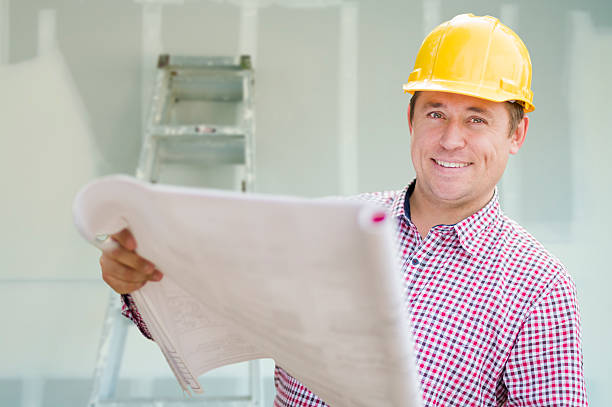 Still can’t decide on the type of wall material to use for your commercial or residential interior space? Drywall would be an excellent choice. Compared to the traditional plaster, drywall has a lot of amazing benefits to offer. It is easier and faster to install and would only require expert hands when it comes to the taping and finishing part. Another advantage of using drywall is that it is fire resistant since it is made of gypsum. When it comes to appearance and durability, drywall also never fails to impress. To give your drywall a more classy and elegant look, give drywall painting a try. Here are 6 easy steps to paint drywall: 1. Dust off and clean drywall. Before painting, cleaning the surface is a must-do. The same applies to drywall. There will be a lot of dirt particles on walls and ceilings that need to be removed. Otherwise, they would create ugly bumps when the painting is done. Even a new drywall comes with a lot of dust and needs to be cleaned. Start the drywall cleaning by using a broom on walls and ceilings, then mop. For final dusting, use a sponge or microfiber cloth that is barely damp. 2. Clear working space and cover furniture. In order to work with ease, clear the working space first. If you are going to paint the drywall in your living room or kitchen, make sure you move away appliances and furniture from the wall. You will also need to cover them up to keep them protected from paint debris. 3. Gather your tools. Getting your painting tools ready and within reach makes the painting process easier and faster. For painting your drywall, you will need these tools: Drop cloth Drywall painting can be messy. Expect the worst and get your drop cloth ready for easy cleaning. You can use your old clothing for this which you can throw away after use. Dropcloth can protect your floor from drips of paint. Paint tray Using a paint tray saves time. It saves you the hassle of approaching your paint cans whenever you need to use more paint. Nowadays, you can find a paint tray in the market that can carry a gallon of paint for convenience. Paint rollers and small brushes Paint rollers make the painting work in large walls easy. Rollers can cover high areas and hard-to-reach spots. You will also use small brushes to do a little touch up after the drywall is completely painted. Ladders For high wall areas that your paint rollers can’t reach, using a ladder is the way to go. It is not safe to stand on chairs, so make sure to get your own ladder before starting with the painting job. 4. Apply primer. To paint your drywall, you need to apply a drywall primer first. Primers help hide joints, seams and other natural blemishes in bare wood. There are also available drywall products that prevent mold stains and discolorations from showing through the final paint finish. 5. Paint drywall with your color. Choose the color you want to permanently see around your building interior. You are required to apply two coats of paint for a durable and long-lasting paint finish and easy cleaning. It is ideal to wait for 2-3 hours before applying the second coat of paint. 6. Let paint dry. After accomplishing a full painting coverage on your drywall, leave the paint to dry before putting back all the furniture and appliances. Use access panels that you can paint over to match your drywall finish If you are concerned with how an access door will appear around your drywall finish, make use of a paintable material for a neat wall appearance. Ready-to-paint access panels are available for both commercial and residential applications. Whether you are planning to work on your own or with help from the pros, make sure to observe proper safety regulations; wear protective gear and check the conditions of your tools and equipment. Have fun with your renovation work but remember to work safely. Virn Del Valle is a bookworm, a writer and an online marketer. She helps businesses increase their ROI and play around with content marketing method. She's currently connected with Best Access Doors, one of the top leading access doors company in the US and in Canada. © 2019 This article is not to be reproduced for commercial purposes without written permission from the author.  For more valuable tips and advice read: 'An Introduction to Building and Renovating Houses - Volume 1 Hiring Contractors, Managing Construction and Finishing Your Home' and 'Volume 2 Finding Your Ideal Property and Designing Your Dream Home' |
AuthorI’m a construction professional, author of several successful construction management books, and a home owner. I’ve made mistakes in construction management, I’ve seen others make mistakes, but importantly I’ve had multiple successful construction projects and I’ve learned from the mistakes. I want to share these lessons and my knowledge with you. Also available from:
Amazon Au, Amazon DE, Amazon ES, Amazon CA, Amazon IT, Amazon FR, Amazon NL, Amazon India and 'An Introduction to Building Houses - Volume 2 Finding Your Ideal Property and Designing Your Dream Home'
Archives
July 2024
CategoriesWe welcome genuine comments, especially comments that add additional information to the subject matter in the article. We however reserve the right to remove inappropriate comments, which includes comments that have nothing to do with the subject, comments that include inappropriate language, and comments that are an advertisement for a product or company, or which include an advertising link. Comments must be in English. We will not enter into discussion on why a particular comment was removed.
|

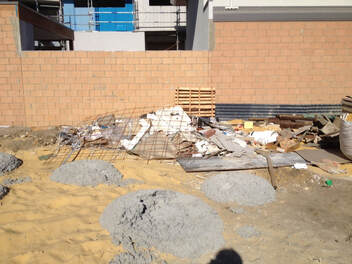
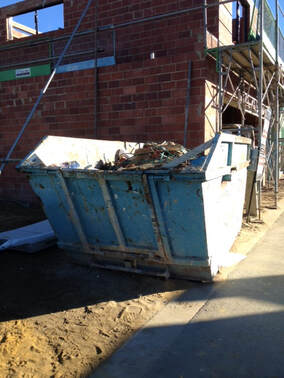
 RSS Feed
RSS Feed 